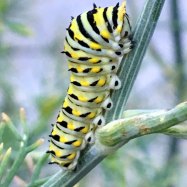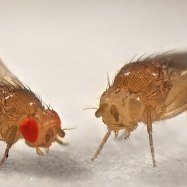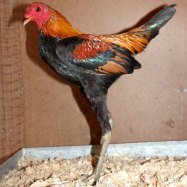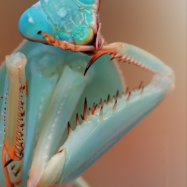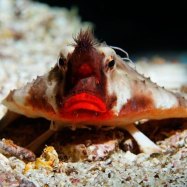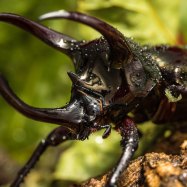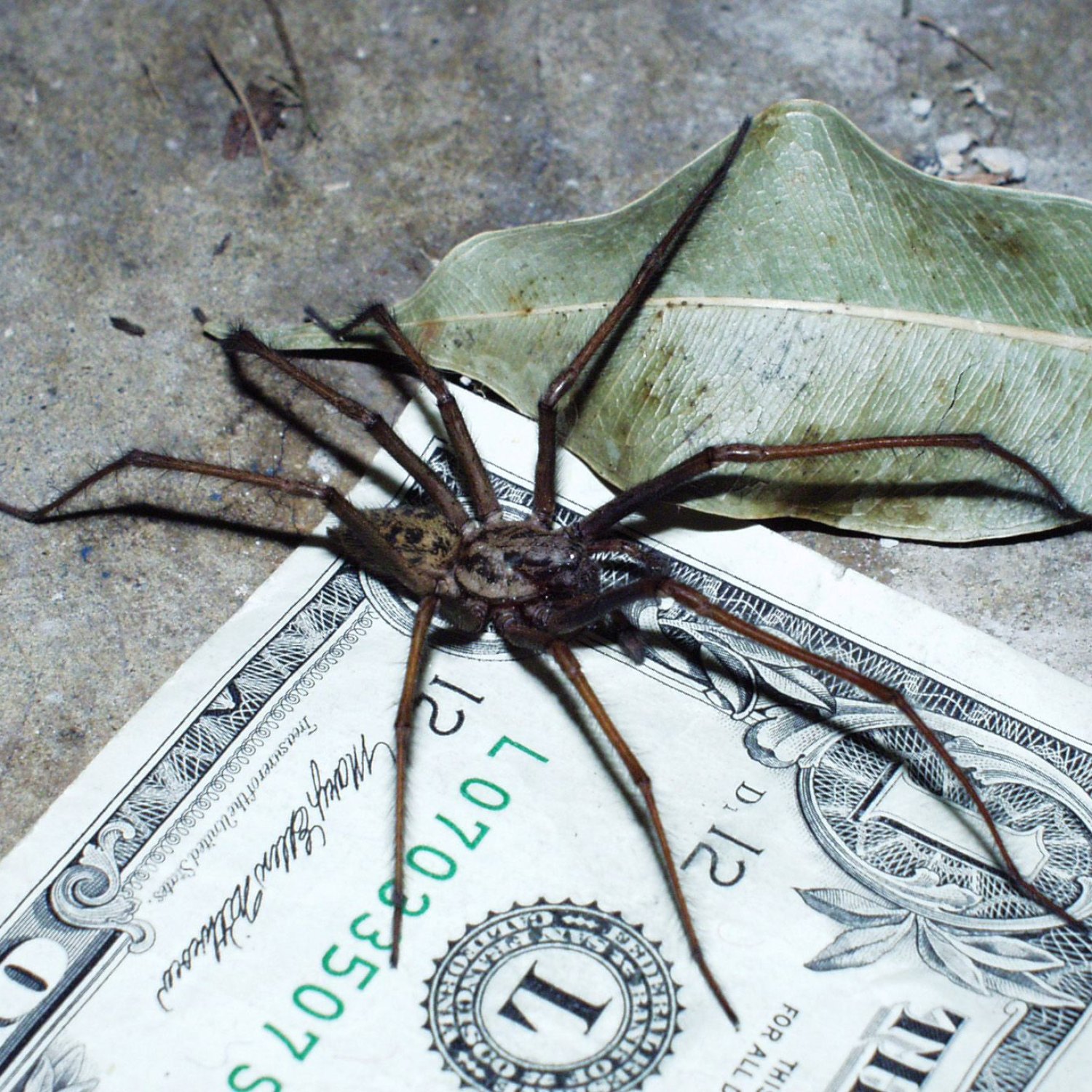
Giant House Spider
Female: up to 1 inch (2.5 cm), Male: smaller
Meet the Giant House Spider, a common sight in European homes. These compact and robust spiders can grow up to 1 inch, with females being larger than males. Don't worry, they may look scary but they are harmless to humans. Keep an eye out for them in your home, especially during the colder months. #GiantHouseSpider #Agelenidae #EuropeanSpiders
Animal Details Summary:
Common Name: Giant House Spider
Kingdom: Animalia
Habitat: Indoors - houses, barns, sheds
The Fascinating World of the Giant House Spider
Have you ever encountered a large, intimidating spider in your home and wondered what species it could be? Well, if you're in Europe, there's a high chance that it could be a Giant House Spider. These formidable arachnids are not only impressive in size but also have a rich history and unique characteristics that make them stand out from other spider species.The Giant House Spider, scientifically known as Tegenaria duellica, is a member of the family Agelenidae, which includes funnel-web spiders. It is also commonly known as the Giant House Spider, due to its preferred habitat of living indoors, particularly in houses, barns, and sheds Giant House Spider. These spiders have captured the interest of both scientists and the general public due to their remarkable size and behavior.
Before delving into the fascinating world of the Giant House Spider, let's take a closer look at its taxonomy and distribution. As with all living beings, this spider has a scientific name consisting of its genus and species. Its scientific name Tegenaria duellica is derived from the Greek word "tegenarion," meaning "a kind of spider," and the Latin word "duellicus," meaning "warlike."
Taxonomically, the Giant House Spider belongs to the Animalia kingdom, Arthropoda phylum, and Arachnida class. This class includes spiders, scorpions, mites, and ticks, among others. Within the class of Arachnida, the Giant House Spider belongs to the order Araneae, which includes all spiders. The family Agelenidae, to which this spider belongs, comprises over 90 genera and over 1300 species.
So, what makes the Giant House Spider unique within its family and order? Let's find out Giant Isopod.
Appearance and Physical Characteristics
The most distinctive characteristic of the Giant House Spider is, of course, its impressive size. Females can grow up to one inch (2.5 cm) in length, making them one of the largest spiders in Europe. On the other hand, males are relatively smaller, but their elongated and slender legs make them look larger than they really are.In terms of body shape, the Giant House Spider has a compact and robust build. Its body is covered in fine hairs known as setae, which help with movement and sensing the environment. The setae are so sensitive that they can detect even the slightest vibrations, making it easier for the spider to hunt for prey or evade predators.
Another unique characteristic of this spider is its coloration, or rather its lack thereof. While some may think of a spider as being black or brown, the Giant House Spider is quite variable in color, with shades of brown and gray being the most common. This coloration is advantageous for the spider, as it can easily blend in with its surroundings, making it less conspicuous to potential prey or predators.
Feeding Habits
Being carnivorous, the Giant House Spider feeds on a wide variety of insects such as moths, flies, beetles, and other spiders. It uses its strong and agile legs to chase down its prey and its venomous fangs to immobilize it. Once the prey is subdued, the spider uses its powerful jaw-like structures, called chelicerae, to tear apart its prey and consume it.Interestingly, the Giant House Spider doesn't rely solely on its venom to take down its prey. It is also equipped with strong mandibles, which act as crushing tools to help in the process of eating larger prey. This spider has been recorded to have a large appetite, and it is not uncommon to find them with multiple prey items in their webs.
Behavior and Habitat
The Giant House Spider is predominantly an indoor spider, and as its name suggests, it prefers to build its webs in human structures such as homes, barns, and sheds. Their webs can usually be found in corners, crevices, and under furniture or other elevated surfaces.Contrary to popular belief, this spider is not aggressive towards humans and is actually quite timid. When disturbed, it will typically retreat and hide rather than attack. However, if it feels threatened, it can bite as a last resort. Fortunately, its venom is not considered dangerous to humans, and its bite is comparable to a bee sting.
During the mating season, which typically occurs in the autumn, the male Giant House Spider will venture out in search of a female. When successful, they will mate, and soon after, the male will die, while the female will live on to lay her eggs in a cocoon made of silk. The female will guard the egg sac for several weeks until the eggs hatch, and the spiderlings disperse.
In the wild, the Giant House Spider can be found in various locations across Europe, including the United Kingdom, Germany, France, and Scandinavia. However, due to its ability to thrive indoors, it has been introduced to other parts of the world, such as the United States and Canada. In these areas, it is considered an invasive species and can compete with native spiders for resources.
The Giant House Spider and Humans
The Giant House Spider, despite its intimidating name and appearance, plays a crucial role in the ecosystem. As predators, they help regulate the population of other insects, keeping their numbers in check. In addition, their webs contribute to maintaining a balance in the environment by capturing small flying insects and preventing them from overpopulating.However, as with most spiders, the Giant House Spider is often the subject of fear and disgust among humans. Many people have a natural aversion to spiders, and the thought of them in their homes can be unsettling. But before you panic and reach for the nearest shoe, consider that these spiders pose little to no harm to humans and play an essential role in maintaining a healthy ecosystem.
The Conservation of the Giant House Spider
In general, spider populations have been declining due to various factors such as habitat destruction, pollution, and climate change. However, the Giant House Spider is not considered a threatened species at the moment. Its adaptability to living indoors and its ability to thrive in human structures have helped maintain its population.Nevertheless, it is always important to be mindful of the impact we have on the environment and to take measures to protect all living beings, including spiders.
The Fascinating World of the Giant House Spider
In conclusion, the Giant House Spider may seem like a terrifying creature to some, but it is an essential part of the ecosystem and is more beneficial than harmful. Its impressive size, unique characteristics, and adaptability make it a fascinating arachnid to study and observe. Next time you come across one of these spiders in your home, take a moment to appreciate its sheer complexity and respect its role in the environment. After all, we coexist with these creatures, and it is crucial to understand and appreciate them rather than fear them.

Giant House Spider
Animal Details Giant House Spider - Scientific Name: Tegenaria duellica
- Category: Animals G
- Scientific Name: Tegenaria duellica
- Common Name: Giant House Spider
- Kingdom: Animalia
- Phylum: Arthropoda
- Class: Arachnida
- Order: Araneae
- Family: Agelenidae
- Habitat: Indoors - houses, barns, sheds
- Feeding Method: Carnivorous
- Geographical Distribution: Europe
- Country of Origin: European countries
- Location: Mostly in Europe, but can also be found in other parts of the world
- Animal Coloration: Variable, usually brown or gray
- Body Shape: Compact and robust
- Length: Female: up to 1 inch (2.5 cm), Male: smaller
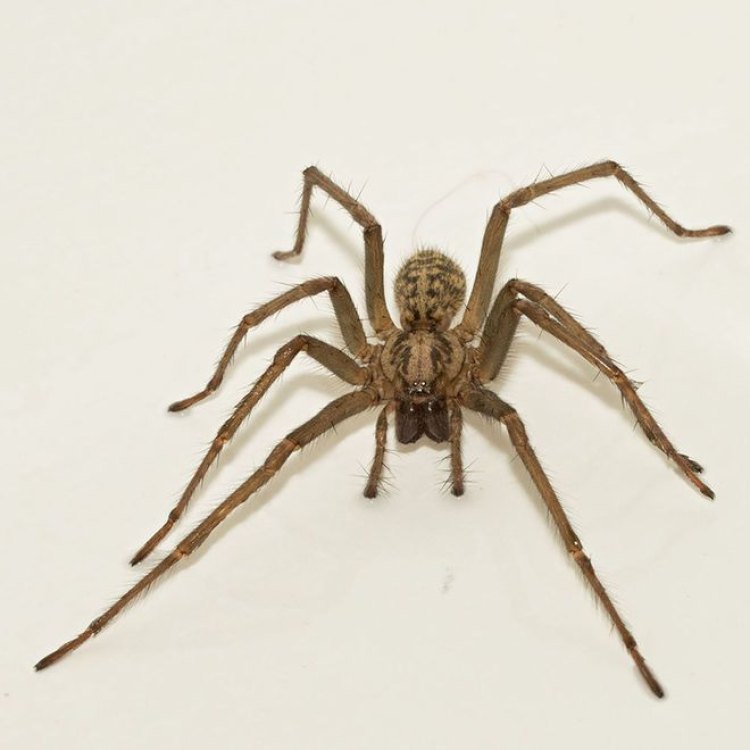
Giant House Spider
- Adult Size: Female: larger than males
- Average Lifespan: 1-2 years
- Reproduction: Sexual
- Reproductive Behavior: Males perform courtship rituals to attract females
- Sound or Call: None
- Migration Pattern: Non-migratory
- Social Groups: Solitary
- Behavior: Active at night, hides during the day
- Threats: Predation, habitat destruction, pesticide use
- Conservation Status: Not evaluated
- Impact on Ecosystem: Helps control insect populations
- Human Use: Not used by humans
- Distinctive Features: Large and hairy, long legs
- Interesting Facts: Females are larger and more aggressive than males
- Predator: Various birds and mammals
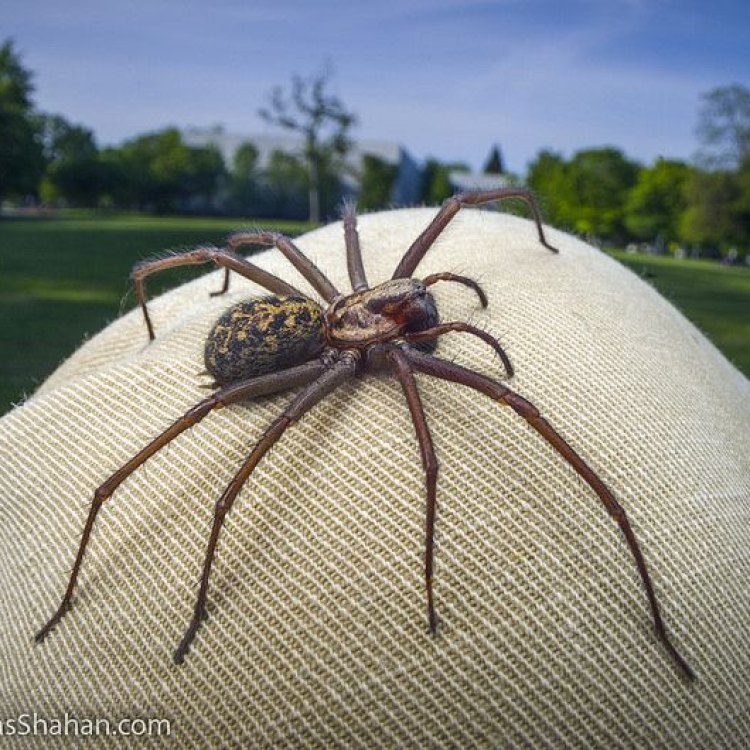
Tegenaria duellica
The Fascinating World of Giant House Spiders
Spiders, with their eight legs and furry bodies, often evoke strong reactions from people - from fear to fascination. Among the arachnids, the giant house spider stands out for its impressive size and unique features. While its name may make it sound like a terrifying creature, in reality, the giant house spider is just a harmless and largely misunderstood resident of our homes. In this article, we will take a closer look at the world of giant house spiders and unravel some interesting facts about these remarkable creatures PeaceOfAnimals.Com.The giant house spider, scientifically known as Eratigena atrica, is a species of funnel weaver spider found in Europe and parts of North America. As the name suggests, these spiders are commonly found in and around houses, buildings, and other man-made structures. They are also known as the "greater house spider" or "giant European house spider."
One of the most striking features of the giant house spider is its size. These spiders can grow up to 2 inches in body length, with females being larger than males. This is unusual in the spider world, as most species have males larger than females. The average lifespan of a giant house spider is around 1-2 years, with females living slightly longer than males.
Like most spiders, the giant house spider reproduces sexually. Interestingly, the male spiders perform courtship rituals to attract females Great Plains Rat Snake. These rituals involve tapping on the female's web in a specific pattern to signal their interest. If the female is receptive, she will allow the male to approach and mate with her.
Unlike some other species of spiders, giant house spiders do not produce any sound or call to attract mates. They rely solely on their courtship rituals for successful reproduction. Another interesting fact about these spiders is that they do not migrate. They are considered non-migratory and usually stay in the same area where they were born.
These spiders are solitary creatures, which means they do not form social groups or colonies like some other insects. They live and hunt alone, only coming into contact with other spiders during mating or territorial disputes. They are active at night and spend most of their time hiding during the day, often in dark corners or cracks in walls.
In their natural habitat, giant house spiders face a few threats, including predation by various birds and mammals. However, the main threat to their survival is human activities. Habitat destruction, particularly the destruction of old buildings and homes, can significantly impact their populations. The use of pesticides is also detrimental to these spiders, as it kills not only the insects but also their predators like the giant house spider.
Interestingly, despite being found in homes, giant house spiders are not used by humans in any way. They do not have any medicinal or commercial value, and people generally try to get rid of them as they are perceived as pests. However, these spiders play a crucial role in maintaining the ecosystem's balance and should be appreciated for their contributions.
One of the most distinctive features of the giant house spider is its large and hairy body and long legs. The fur on their body not only gives them a frightening appearance, but it also serves a purpose. The hair on their bodies helps them to sense their environment better, mainly by detecting vibrations and changes in air pressure. These abilities are essential for their survival and hunting.
Females are not only larger than males, but they are also more aggressive. This aggression is an important trait for female spiders as they need to defend their webs and young from potential predators. If threatened, they can bite, but their venom is not harmful to humans and only causes mild irritation.
Giant house spiders may seem like a nuisance to some, but they play a crucial role in the ecosystem. These spiders are natural pest controllers, and they help to control insect populations. Without them, our homes could be overrun with insects like flies and mosquitoes, causing more significant problems for us.
Despite their large size and sometimes intimidating appearance, giant house spiders are not considered dangerous to humans. They are timid creatures and generally avoid human interaction. In most cases, they will only bite if they feel threatened or cornered. And as mentioned earlier, their venom is not harmful to humans.
In terms of conservation status, the giant house spider has not been evaluated yet. This means that there is not enough data available to determine their population status and the potential threats they face. However, considering the decrease in old buildings and the widespread use of pesticides, it is essential to monitor their populations and protect their habitats.
In conclusion, the giant house spider may not be everyone's favorite insect, but they are remarkable creatures that deserve our respect and protection. Their unique features, interesting behaviors, and essential role in the ecosystem make them a fascinating species to study and appreciate. So, the next time you spot a giant house spider in your home, remember that it is just a harmless, shy creature trying to survive in its natural habitat.
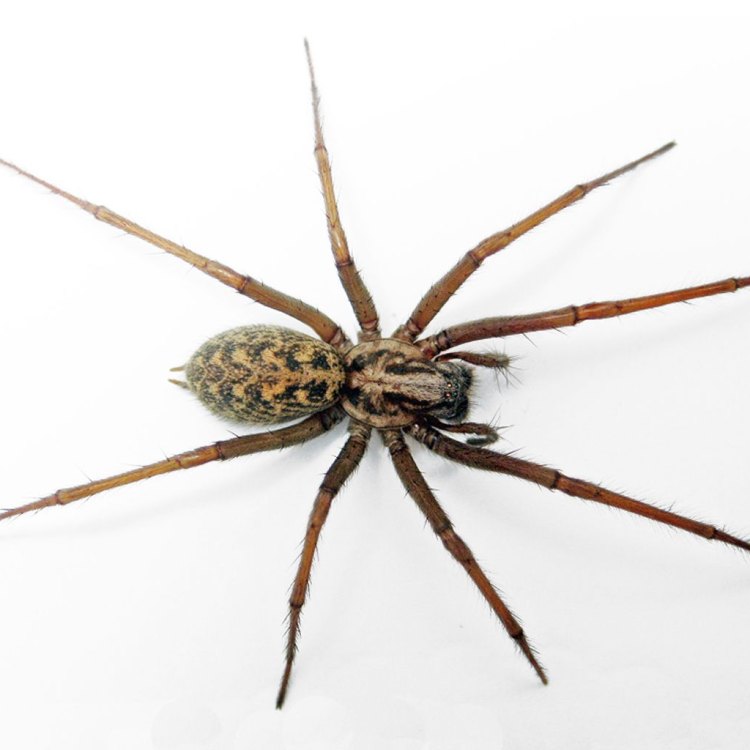
The Fascinating World of the Giant House Spider
Disclaimer: The content provided is for informational purposes only. We cannot guarantee the accuracy of the information on this page 100%. All information provided here may change without prior notice.




